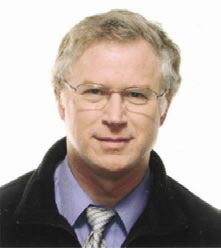
A Beginner's Guide to Structural Engineering
by T. Bart Quimby, P.E., Ph.D.
© 2006, 2007, 2008, 2011 T. Bartlett Quimby
Preface
3 August 2007
(Updated 28 July 2011)
The creation of the Beginner's Guide to the Steel Construction Manual (BGSCM) was prompted by the major rewrite of the AISC specification that showed in the 13th edition of the Steel Construction Manual (SCM). When textbooks were slow to respond to the change, I started thinking that a web based approach would be more responsive. After further thought the site was expanded to include undergraduate topics in structural engineering for civil engineers.
Initially, my thought was to simply put together my 20 years of lecture notes to supplement the same wonderful textbook that I have been using for the past couple of decades. As the work got to be more extensive than a set of notes, I decided to spend the summer trying to morph this into a stand alone textbook. It is still in progress.
There a couple of philosophical bases that have driven the particular approach to this work.
First, it is my intent that the student get comfortable referring to the base specifications used for design. As a result, if some information is in an industry standard or specification that the students need to know, I refer them to the particular section and let them read it there. This requires that the student have the relevant industry documents nearby whenever reading this text.
Second, it has always bothered me that graduating structural engineering students are commonly unaccustomed to reading real engineering drawings so I have endeavored to present problems that are in quasi engineering drawing format. It is hoped that students will quickly grasp the concept of reading engineering drawings and feel more comfortable with their first experiences as a design engineer. To facilitate the goal of enhancing a student's ability to read and use engineering drawings, I have provided drawing sets for homework problems that come from real designs.
Third, and related to item two, is that I have chosen to present problems that are in context of a whole structure. I have seen this done by instructors at other institutions, but it is often difficult to find the time to really develop such problems in a way that students can understand them. As no one structure supplies all types of problems, I have provided several different structures (a building, a tower, and a truss bridge) that cover most of the bases. I have also provided a large set of drawings of random details that are used by the other structures and/or can be used as stand alone problems.
Fourth, I wanted the text presented in a way that allows for quick updates and for media types not possible in printed books. This left the Internet website as the logical choice. You will find that many of the figures have hot links that allow for larger views of all or part of the figure. There are also active links to spreadsheets, powerpoint animations, and tutorials that might help a student to better learn how to implement the requirements of the specification.
Fifth, I wanted this to be free to the students. I had toyed with finding a way to put this in a secure website then policing the integrity of the users, but the whole security issue seems tedious and difficult. So, this is free for use in teaching structural engineering design. It is copyrighted, however, which means that I'd rather not see my work show up in someone else's book.
The problem with making this free is that I have spent countless hours working on this for free, the site is hosted on a web server in my home which is not always reliable, I don't have access to the services of a good technical editor, and I canít afford a web programmer to further my multimedia ideas. I am currently looking for sponsors who will pay an advertising fee sufficient for me to fix these problems. The proceeds from the sale of this text will help, but will not be enough unless sales are better than I expect. If you know of anyone interested in such a sponsorship, I would be happy to talk with them and share current usage statistics. I can be reached at quimbyassoc@gmail.com.
Sixth, I want input concerning the content and pedagogy of this text.
I have been fortunate to have received several very good suggestions from
people that have viewed the online text. I welcome all input
concerning the text.
So there you have it. My thoughts behind this work. Any comments about the text are appreciated.
I also am pleased to thank the people that have (and those that will) send in suggestions for improvement to the text. These have already made a substantial difference in the work and I look forward to receiving more. No text of value is written in a vacuum or an ivory tower.
- T. Bart Quimby, P.E, Ph.D., F.ASCE